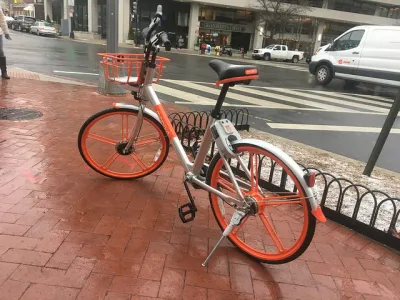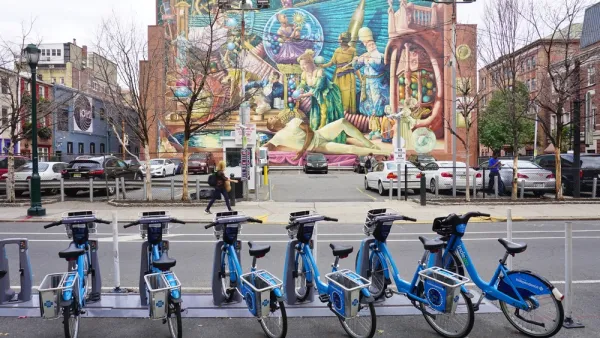Dockless bikes offer the unexpected and help users navigate and understand the urban environment in new and different ways.

In an excerpt from the new book The Urban Improvise: Improvisation-Based Design for Hybrid Cities, Kristian Kloeckl reflects on the role of dockless bike systems as part of the urban landscape. He looks at the changes in bikeshare program from Amsterdam’s White Bicycle Plan in the 1960s to today’s digital and highly connected networks.
Dockless bikes offer the openness and freedom to make new and more spontaneous travel decisions, says Kloeckl. "When you see a bike in plain sight or virtually on a digital map, you walk up to it, unlock it with your smartphone, and start riding it, to then leave it parked at any spot. It is a strength of the system that it is so inviting and easily accessible; people come up with new ways of integrating these bikes into their daily routines that they themselves did not consider before."
Dockless bikesharing is not without its issues — missing and abandoned bikes or bikes left outside of the system’s boundaries, for example. But this uncertainty is also what fuels the possibilities, argues Kloeckl.
"The dockless bike-sharing system is in constant flux. Bikes are parked in different locations all the time, and the system, in this way, is capable of adapting to changing conditions of traffic, housing, residency, and so on. Precisely because there are no predetermined docking stations, the parked bike locations remain relevant in the context of constantly changing urban conditions, as the locations are an expression of actual use," adds Kloeckl.
FULL STORY: Embracing the Improvisation of Dockless Bike-Share

National Parks Layoffs Will Cause Communities to Lose Billions
Thousands of essential park workers were laid off this week, just before the busy spring break season.

Retro-silient?: America’s First “Eco-burb,” The Woodlands Turns 50
A master-planned community north of Houston offers lessons on green infrastructure and resilient design, but falls short of its founder’s lofty affordability and walkability goals.

Delivering for America Plan Will Downgrade Mail Service in at Least 49.5 Percent of Zip Codes
Republican and Democrat lawmakers criticize the plan for its disproportionate negative impact on rural communities.

Test News Post 1
This is a summary

Test News Headline 46
Test for the image on the front page.

Balancing Bombs and Butterflies: How the National Guard Protects a Rare Species
The National Guard at Fort Indiantown Gap uses GIS technology and land management strategies to balance military training with conservation efforts, ensuring the survival of the rare eastern regal fritillary butterfly.
Urban Design for Planners 1: Software Tools
This six-course series explores essential urban design concepts using open source software and equips planners with the tools they need to participate fully in the urban design process.
Planning for Universal Design
Learn the tools for implementing Universal Design in planning regulations.
EMC Planning Group, Inc.
Planetizen
Planetizen
Mpact (formerly Rail~Volution)
Great Falls Development Authority, Inc.
HUDs Office of Policy Development and Research
NYU Wagner Graduate School of Public Service




























